Florentine mosaic manufacturing technique. Florentine stone mosaic. The use of Florentine mosaics at the present stage
Today, mosaics are taken for granted, but in the past, only the wealthiest people could afford them. At a time when mass production of tiles was not established, people laid out drawings with their own hands, using only improvised means and colored stones.
On the this moment Historians list four techniques for making mosaics: Roman, Russian Alexandrian and Florentine. The most complex of all is the Florentine mosaic. For its manufacture, craftsmen use colored ornamental stones: tiger's eye, amethyst, malachite, agate, carnelian, serpentine, jasper, marble, lapis lazuli, sodalite, hematite. In the manufacture of the image, stones of certain shades are used, which are given the desired shape and cut. After processing, the stone elements are joined to each other, forming a pattern. To highlight rounded lines, many small stones or one carefully processed element are used. The resulting image can accurately convey fine details and halftones, which is difficult to achieve even with oil paint.
Most jewelry of this kind comes from Rome, Italy. . Although mosaics have always been made, there are some peaks when they are more often created. For jewelry embellished with this technique, we can narrow the period down to the end of the 18th and 19th century, although they are still in production. As popularity grew, mainly due to tourism, workshops began to specialize in this art, and in later periods a general decline in skill can be expected. Familiarity with jewelry mosaics can be extremely tricky, and fixtures are usually the best clues when maker's marks or prospectus documents are missing.
Florentine originated in the early 16th century and was popular for 300 years. The Duke of Tuscany Ferdinand I di Medici played an important role in the development and improvement of the art of creating "stone paintings". He was the first to establish a workshop for working with precious and semi-precious stones, which was called the "Gallery dei Lavori". Here the Italian craftsmen began to experiment with composing images from colored stones, which later became known as "pietra dura".
The use of Florentine mosaics at the present stage
Castellani gold micromosaic brooch, ca. The technique for creating these mosaics not only involves a steady hand and some artistic skill, but more importantly, it takes a lot of patience to place these glass tiles in place. One can easily imagine that the design takes anywhere from several months to longer. A layer of cement was placed on a metal back and left to dry, after which the structure was applied to the cement. The cement was then cut out to accommodate small tesserae, which were then individually placed into the channels with some adhesive.
Jewelers designed own style mosaics called "commesso", which means "docked" in translation. Why such a name? The fact is that after cutting and shaping semi-precious stones, they formed a certain pattern in such a way that the line between them was almost invisible. The Florentine mosaic technique was used in the manufacture of countertops, wall panels, jewelry boxes, chessboards, as well as to decorate furniture elements. Unfortunately, by the end of the 19th century, this art form was no longer relevant, as people switched to painting and architecture.
Castellani's motifs were inspired by early Christian mosaics as well as archaeological finds. Although the mosaics were created under Castellani's supervision, they were fabricated in the workshop of Luigi Podio, with whom he had a lifelong commitment. The other 19 motifs found on micromosaics from Rome include Pliny doves, portraits, Roman buildings and ruins, mythological gods and creatures, and flora and fauna. From Switzerland came micromosaics with predominantly floral and landscape images.
Another, small, center for the production of micromosaic was in Naples. Once the micromosaic was finished, it was incorporated into jewelry, usually a brooch, pendant or necklace. Subsequently, these calibrated pieces are embedded in a slab of black marble, or - in later periods - in black glass. This method requires not only that the individual pieces of the puzzle be assembled very tightly, but also that the background in which it is embedded is carefully treated as a tight-fitting outline negative.
Today, pietra dura mosaics can be found in historical museums and private collections. The most famous mosaic works: "Moscow Yard", "Panel with a Sunflower", "Smell and Touch", "Mountain River".
Florentine stone mosaic - manufacturing features
Italian mosaic has a number of features that distinguish it from other types of masonry:
Most mosaics of this type are multi-colored images against a dark marble or glass background and then set into a piece of jewelry. The motifs have a wide range, but mostly they have a floral design. It was said that droplets of acids were sometimes used to create the bedding. The quality of these items lies in the elegance of work and on its fasteners.
- Architect.
- On the Art of Mosaic, Antiquity and Modernity.
- Suffolk, England: Antique Collectors Club, Huibers, Geoff.
- all parts of the design fit so tightly that the joints between the stones are almost invisible;
- all elements must be carefully polished and be in the same plane;
- even the most exact copy differs from the original, since in nature there are no absolutely identical stones;
- it may take several months to create one mosaic;
- unlike drawings on canvas, stone images do not fade and do not fade over the years.
Today, "stone paintings" adorn small boxes or cabinet doors. A lot of money is taken for the work, since each image is made by personal order.
From the first day of the course, students work with silver and stones, of which they have a huge store. All materials are included in the fee, and students keep all the jewelry they make, except for one piece that stays with the school. Courses include leather work, jewelry, ceramics, glassware, in addition to design, restoration, cooking, painting, drawing and Italian.
Historical emergence of Florentine technology
The school premises are located in historic building with classrooms for drawing and design both by hand and computer, and a large fully equipped workshop with customized professional workbenches and tools and tools required for various trades such as engraving, casting, setting, embossing, embossing, wax modeling, carving for wood, as well as machines for a complete casting cycle.
Some designers use Italian technology in the manufacture of women's jewelry. Pendants, brooches and large earrings are decorated with thin plates of colored stone, which are folded into a certain pattern. It should be noted that the same elements in one product may have different shades due to the heterogeneity of natural stone.
Italian International Institute Lorenzo De Medici
In collaboration with the Art Institute of Florence, we offer a wide range of studio art courses at all levels, including jewelry design, printing, ceramics, in addition to painting, drawing, sculpture, photography, theatre, music, dance, restoration visual arts, interior, graphics and fashion design, culinary, film and multimedia.
A course in batik, ceramics, book art, furniture design, etching, lithography, weaving, engraving and serigraphy, as well as many others in the field of beauty, conservative, artistic, visual, liberal and decorative arts; design; and Italian.
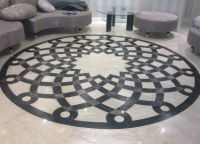 |
 |
 |
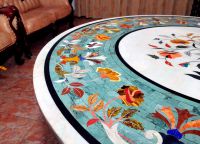 |
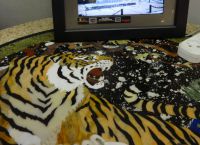 |
 |
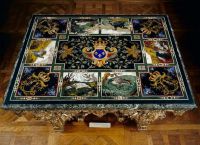 |
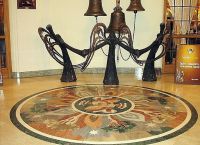 |
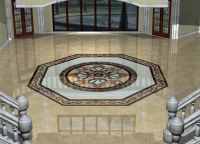 |
Mosaic made of colored stone is one of the ancient species monumental art. The most difficult of them is Florentine. Mosaic paintings have one of the most valuable properties- they are eternal in time, as stone paints do not fade, do not fade and do not crumble. Ancient Florentine samples have survived several centuries, and still shine with pristine colors and stone patterns. A feature of Florentine mosaics is their absolute uniqueness. Each picture is unique, since the pattern of each stone is unique, and even with careful copying, a slightly different mosaic is obtained.
Direct access to centuries-old Florentine and Italian cultures; A wide range of art and design studios and additional academic courses of outstanding quality; Opportunity to be part of an institution dedicated to leading research and research areas; An unrivaled opportunity to interact with the Florentine community through various social and humanitarian programs. Here research, research, mystical concentration and emotional expression are in harmony to create inspiration that creates a "work of art".
Florentine mosaic appeared (naturally, in Florence) in the Renaissance as a result of the interaction of two very different ideas. The first was an attempt to extend the aesthetic principles of inlaid wooden furniture to objects using natural Italian marble. Marble is relatively easy to process, rich in patterns and shades, and the first mosaic paintings in new technology were made mainly from different types of marble. The second idea is the proclamation of the new artistic principles of realism, for which the ancient mosaic techniques seemed outdated. The embodiment of paintings in stone led to the birth of the technique of making almost seamless mosaics from tightly fitting stone plates.
How it's done?
Through our dynamic exhibitions and artist visiting programs, we educate and encourage students to become acting artists of significance in local and global culture. We offer courses in engraving, etching, lithography, printing, hand printing, book works and typography in addition to painting, drawing, Italian studies and language, video, photography and digital media.
The school makes available to its students tools, stele presses, in which more than two hundred contemporary artists worked: a library of three thousand, photographic archives with thousands of slides and color photographs, as well as archives of works performed at the stage and school.
In 1580, in Florence, in the Uffizi, a workshop was founded, which belonged to the Medici family, where the best examples of mosaic works were created, which caused imitation in all European countries and in Russia. It was in this workshop that the principles of technology that are relevant to this day were developed.
Florentine mosaic uses various valuable breeds stone - marble, jasper, rhodonite, lapis lazuli, flint, porphyry and others. The main thing in choosing a stone is the correspondence of color and pattern to a picturesque sample or sketch of a future mosaic. Thin plates of stone with a polished surface are assembled into a picturesque carpet in such a way that, in addition to color, the natural surface pattern of the stone, natural color variations and lines of texture are used. Stone elements can be of any shape, but they are assembled together so tightly that no seams or even just junction lines should be visible. And while all the plates must be located in the same plane.
Jumbo Studio - School of Ceramics, Art, Languages and Italian Culture
First class services and training for qualified, certified professionals. Classes are held in small groups, which provides an in-depth study of the subject chosen in the ideal atmosphere of the student instructor team. Courses are offered in addition to modern mosaics, glass, ceramics, majolica and Florentine or modern ceramics in addition to fashion, Italian, drawing, painting and sculpture. The school is different from the "classical" art institute or the Academy, seeking more technical and practical results.
Florentine mosaic in terms of time and labor is one of the most difficult. Perfect selection of stones different colors, shades, geometric shapes, patterns requires thoroughness and knowledge of the capabilities of certain breeds. The shades of different rocks of the same stone, the location and frequency of various layers, veins, inclusions, the presence of spots of a different color - the possibilities of the Florentine mosaic palette are the more diverse, the more different stones and rocks are used to draw up a picture. Special processing of stone and careful adjustment of elements require significant labor costs. Even using modern technologies stone processing creation of one mosaic in Florentine technique may take many months.
Most students don't really have a specific experience. Over the years, the teaching method, consisting of an advantageous combination of theory and practice, has been gradually fine-tuned, such as bibliographic material on the subject, which is produced and printed domestically. The courses are mainly aimed at making students fully capable of managing this beautiful art, autonomously, in all its forms.
Mosaic materials and installation methods
The laboratory has space for 15 pottery wheels and 20 artists. The school is located in the heart of historic Florence, just a few steps from Cathedral. The school is dedicated to learning Italian and culture. We offer courses in ceramics and renovation, as well as courses in Italian, art, music, food and culture.
The traditions of making amazing Florentine mosaics have not been forgotten and have not disappeared. You can decorate walls and window sills, floors and countertops with mosaic paintings; you can post themed.




